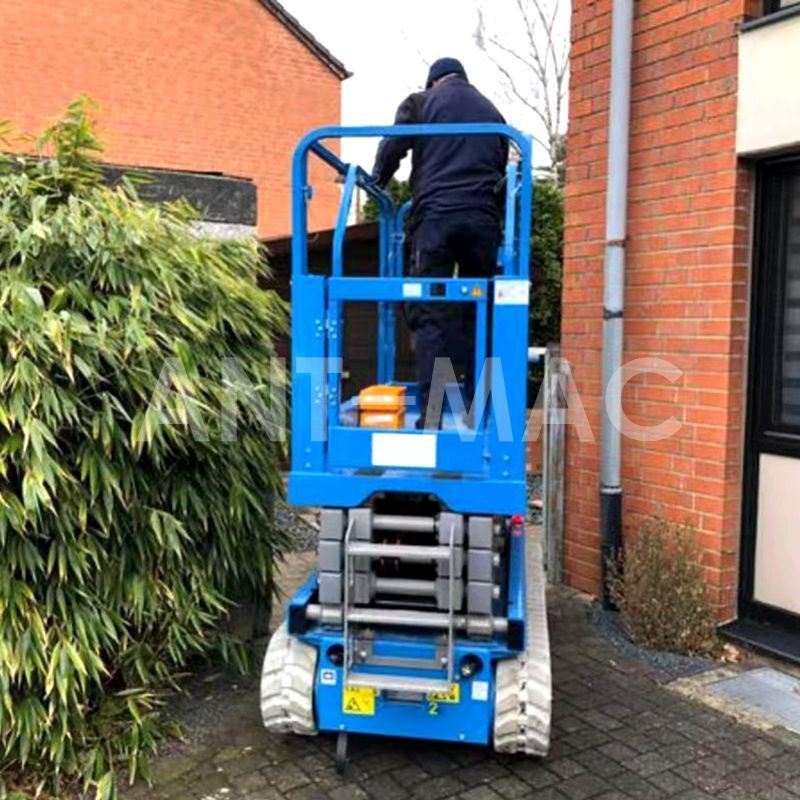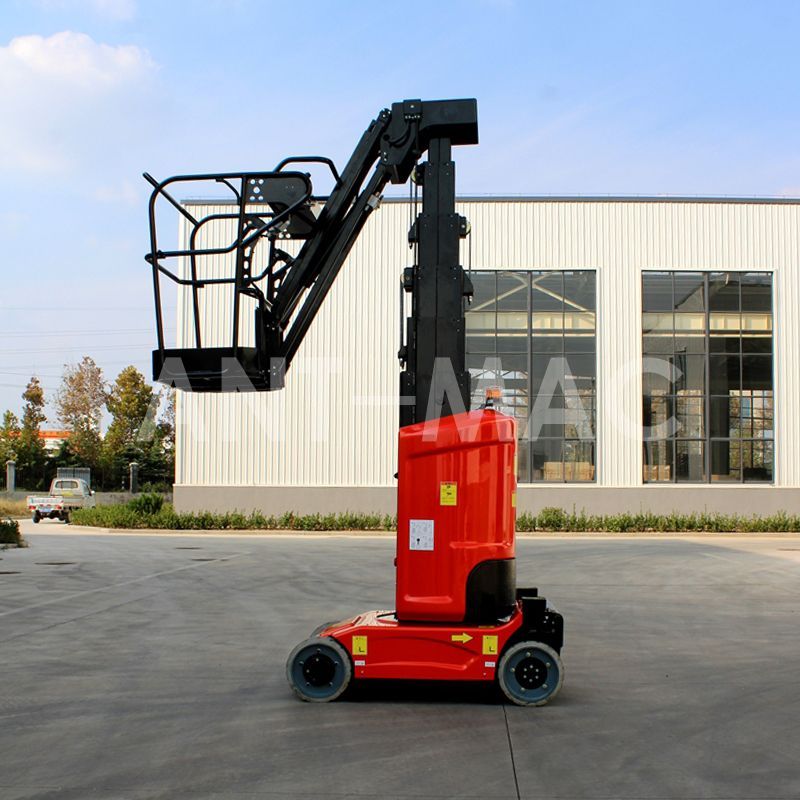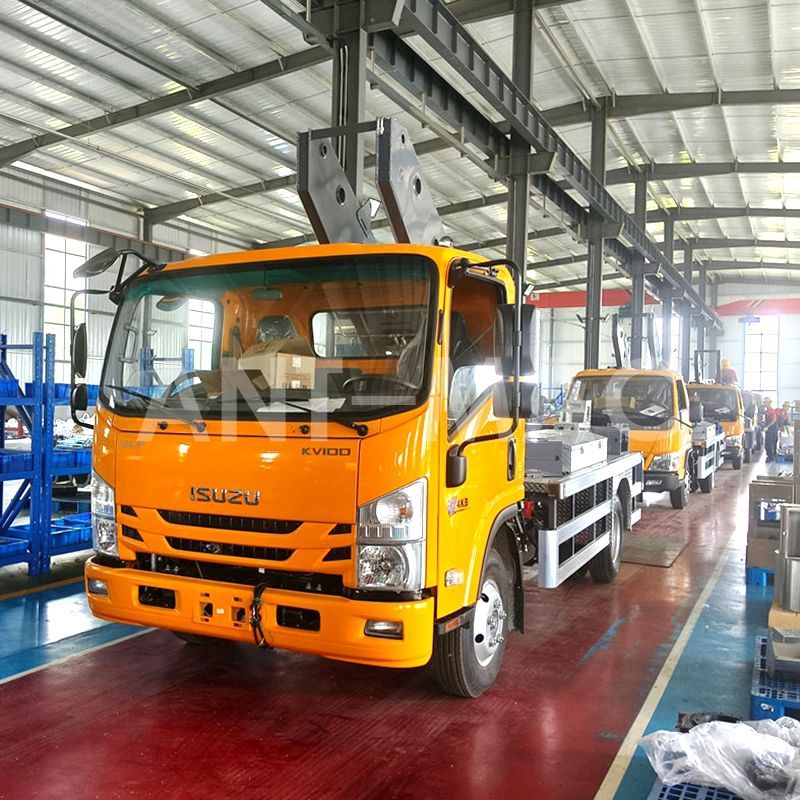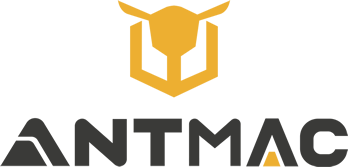Aerial Work Platform vs Traditional Tools: The Top Choice for High-Altitude Operations
Let’s be honest: For decades, we’ve been stuck in a rut with high-altitude work
When facing a job 30 feet up, we’d only think of “crane, scaffolding, or ladder”—as if those were the only options. But the truth is: Cranes are overkill for personnel-focused tasks, scaffolding is inefficient, and ladders are simply dangerous. Then the Aerial Work Platform came along, and it’s like comparing a pickup truck to a horse and buggy—for high-altitude operations, there’s no comparison.
If you’re still using traditional tools for high-altitude work in Complex Job Site Material Handling, let’s break down why it’s time to switch. Spoiler: It’s not just about speed—it’s about efficiency, safety, and using the right tool for the job. The core function of an Aerial Work Platform is to transport workers and essential equipment to height, enabling efficient High-Altitude Material Transport and seamless completion of high-up tasks.
1 Why Traditional Tools Can’t Compete with Aerial Work Platform
First, tower cranes. Don’t get me wrong—they’re excellent for hoisting heavy components on open job sites. But when it comes to lifting workers for precise operations with light equipment, they’re completely useless. My cousin runs a crane service, and he’ll tell you: “You need 20 feet of clear space just for the base, plus another 50 feet for the arm to swing—they’re cumbersome and space-hungry.” In crowded urban job sites, there’s simply no room for them.
What’s more, they’re extremely costly—totally uneconomical for daily high-altitude work. Even for a single day’s use, deploying a small tower crane costs a fortune, and you need a crew of 2–3 people just to operate it. If the job is “sending a worker up to fix a window, run wiring, or install fixtures,” using a crane is a complete waste of time and money.
Next, scaffolding. To get workers up high, you first have to build a “temporary structure”—a tiring process. I once helped a crew set up scaffolding for a 3-story restaurant renovation. It took 3 full days just to haul poles, nail planks, and secure guardrails—and during those 3 days, not a single worker could access the work area. Once the scaffolding was up, workers still had to climb ladders to get on it, and moving light tools around was a hassle, drastically slowing down progress.
Ladders? They’re the worst of all. OSHA data shows that 36% of construction fall accidents involve ladders—no surprise, since workers have to balance on rungs with one hand while holding tools with the other. For tasks that require two hands (like installing fixtures, running wiring, or adjusting equipment), ladders are completely impractical and pose significant safety risks.
The Aerial Work Platfor, by contrast, is perfectly suited for high-altitude operations. Designed specifically to transport workers and essential job equipment, it easily carries workers along with tools, wire spools, fixtures, and other necessary materials, making high-altitude work safe and efficient.
2 Why Aerial Work Platform Dominates High-Altitude Operations
The Aerial Work Platform is a precision tool that safely and quickly transports workers and equipment to height—truly a “specialized tool” for high-altitude tasks. Let’s start with speed: A scissor lift can get a worker and their tools to the 5th floor in just 2 minutes—compared to 10 minutes climbing a ladder, or hours waiting for scaffolding to be erected.
Last month, I watched a crew use an articulating boom lift to repair a rooftop AC unit. They drove the lift over, extended the arm around a chimney, and had the worker at the unit in 5 minutes—with tools right on the platform, ready to use. With a ladder? They would have had to set up stabilizers, climb 30 feet, and carry tools separately—an extremely inefficient process.
Then there’s flexibility. Need to reach around corners? An articulating boom lif’s arm bends like an elbow, easily accessing hard-to-reach spots. Need to navigate indoor spaces through standard doors? A compact vertical lift is only 2.5 feet wide, moving seamlessly. A crew in Austin used one to run wiring through narrow office hallways—no wall scratches, no disruption to other building activities, and efficient and reliable from start to finish.
Safety is in a league of its own. With 42-inch guardrails (taller than OSHA’s 39-inch minimum), non-slip flooring, and a stable base, it provides triple protection—allowing workers to focus on the job instead of worrying about balance. OSHA data shows that Aerial Work Platform reduces fall injuries by 70% compared to ladders. For crews, this not only gives workers peace of mind but also avoids the risk of expensive medical bills and fines.
Its load capacity is perfectly matched to high-altitude work needs, easily accommodating 1–2 workers plus a full set of tools. From toolboxes and wire spools to small fixtures, all essential materials can be transported in one trip—no need for repeated trips to the ground, significantly boosting work efficiency.
3 Hidden Costs of Sticking to Traditional Tools (You’re Wasting Time and Safety)
Traditional tools not only require high upfront investment but also drain costs through inefficiency and safety hazards:
-
Downtime losses: Crane breaks down? You’ll wait 24–48 hours for a technician. Scaffolding plank cracks? Work stops until it’s replaced. Last year, a crew I know lost 5 days of work due to a crane hydraulic line burst—costing $15,000 in unbilled labor.
-
Wasted labor: With ladders or scaffolding, workers spend 30% of their time climbing up and down or moving tools. With an Aerial Work Platfor, workers are productive the moment they reach height—no unnecessary steps.
-
Fine expenses: Cities strictly regulate scaffolding blocking sidewalks or cranes overhanging streets. A crew in San Francisco was fined $1,000 per day for 8 days because their scaffolding blocked a crosswalk—losing $8,000 overnight.
The Aerial Work Platfor avoids all these issues. No tedious setup—just deploy and start working. Most models are compact, easily navigating alleyways or narrow job site passages without the need for occupy the road occupancy permits. Workers stay safe and efficient, with none of the headaches of traditional tools. A general contractor I worked with reduced high-altitude work time by 40% after switching to Aerial Work Platfor, saving $24,000 on a $200,000 project.
4 Which Aerial Work Platform Fits Your Project? (Precisely Match the Job Scenario)
Different high-altitude tasks require different models—choosing the right one maximizes efficiency:
-
Towable boom lift: Ideal for small-scale projects (residential roof repairs, municipal maintenance). Towable with a pickup truck, deployable in 15 minutes, and easily carries workers and light equipment—perfect for flexible use across multiple scenarios.

-
Scissor lift: The workhorse for vertical access. Sturdy with large platforms, they allow workers to arrange tools freely and accommodate multiple workers for collaborative tasks. Electric models are quiet for indoor use; diesel models are powerful enough to handle rough outdoor terrain.

-
Articulating boom lift: Equipped with a “bendable arm,” they excel at reaching around obstacles (eaves, fences) or corners. They’re irreplaceable for installing windows or siding on narrow lots, accessing spots traditional tools can’t reach.

-
Compact vertical lift: Small but powerful. They fit through 3-foot doors, won’t scratch floors, and operate quietly. Ideal for indoor projects—like running wiring, installing fixtures, or painting in offices and stores—without disrupting the surrounding environment.
I once worked on a mixed-use project (retail on the first floor, apartments above) and used all four models: scissor lifts for indoor vertical work, articulating boom lifts for exterior window installation, compact vertical lifts for narrow hallway tasks, and towable lifts for rooftop repairs. The project finished 3 weeks early, saving a total of $35,
 Dual-Chain Telescopic Boom Sys
Dual-Chain Telescopic Boom Sys
 Russian
Russian
